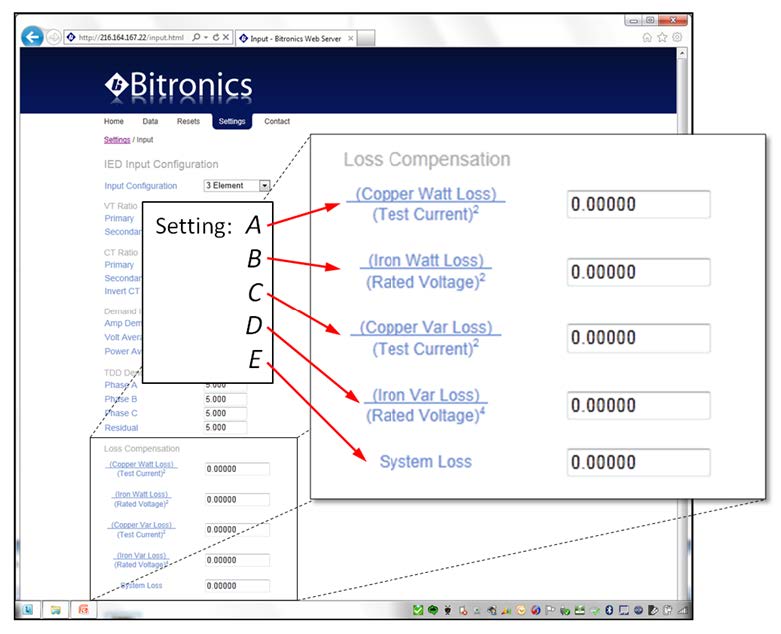
Loss Compensation in 50 Series SCADA Meters
PUBLISHED ON Jun 27, 2013
NovaTech Automation
Bitronics 50 Series SCADA meters (M3 models) now include, in firmware v3.08, calculations for transformer and line loss compensation (TLC/LLC) providing compensated energy values (KWh and KVarh). Both compensated and uncompensated power values are provided for testing, and energy values can be reset to something other than zero to match billing meters. These loss compensation calculations provide a point of delivery measurement for substation operations at tie points where adding extra metering is difficult.
The Total Watt and Var losses can be calculated using five user entered parameters and measured current and voltage values. These losses are added or subtracted to/from the measured Total Watts and Total Vars when accumulating Energy.
Loss compensation on the M650 takes the following general form:
PCOM = PUNC + A•I2 + B•V2 + E•PUNC
QCOM = QUNC + C•I2 + D•V4 + E•QUNC
Where:
PCOM
Compensated three-phase Total Watts. Note the accumulators for +kWh and –kWh in the M650 are calculated by integrating the PCOM measurement over time.
PUNC
Uncompensated three-phase Total Watts measured at the point where the meter is connected.
QCOM
Compensated three-phase Total VARs. Note the accumulators for +kVARh and –kVARh in the M650 are calculated by integrating the QCOM measurement over time.
QUNC
Uncompensated three-phase Total VARs measured at the point where the meter is connected.
I
RMS line current measured at the point where the meter is connected.
V
RMS line-line voltage measured at the point where the meter is connected.
A
Meter setting that accounts for the sum of the full-load-watt-losses from all sources.
B
Meter setting that accounts for the transformer’s no-load-watt-losses.
C
Meter setting that accounts for the sum of the full-load-VAR-losses from all sources.
D
Meter setting that accounts for the transformer’s no-load-VAR-losses.
E
Meter setting that accounts for any “system” losses, proportional to the uncompensated power.
 Configuring the meter to perform loss compensation simply requires the user to calculate the coefficients A, B, C, D, and E defined above, and enter them in the appropriate fields in the M650’s web interface on the Settings/Input page as shown in the screen shot.
Configuring the meter to perform loss compensation simply requires the user to calculate the coefficients A, B, C, D, and E defined above, and enter them in the appropriate fields in the M650’s web interface on the Settings/Input page as shown in the screen shot.
The sign of the settings A, B, C, D, and E determines whether losses will be added to or subtracted from the uncompensated measurements in order to determine the compensated power and energy. To add losses, be sure the settings are all positive. To subtract losses, be sure the settings are all negative. Settings should always have the same sign. Making all of the settings equal to zero turns off loss compensation.
System losses (E) are a fixed percentage, mutually agreed upon between two electric utilities, about an interchange point that lies on a branched line. As such, E is not a physical property of any particular line, transformer or the meter, so no further guidance on how best to calculate the coefficient E can be provided here. Users who do not intend to use system losses should simply set E equal to zero.
A detailed application note on loss compensation in the 50 Series, as well as a spreadsheet to assist in calculating the coefficients, can be found in the documentation library of the NovaTech Automation website.


